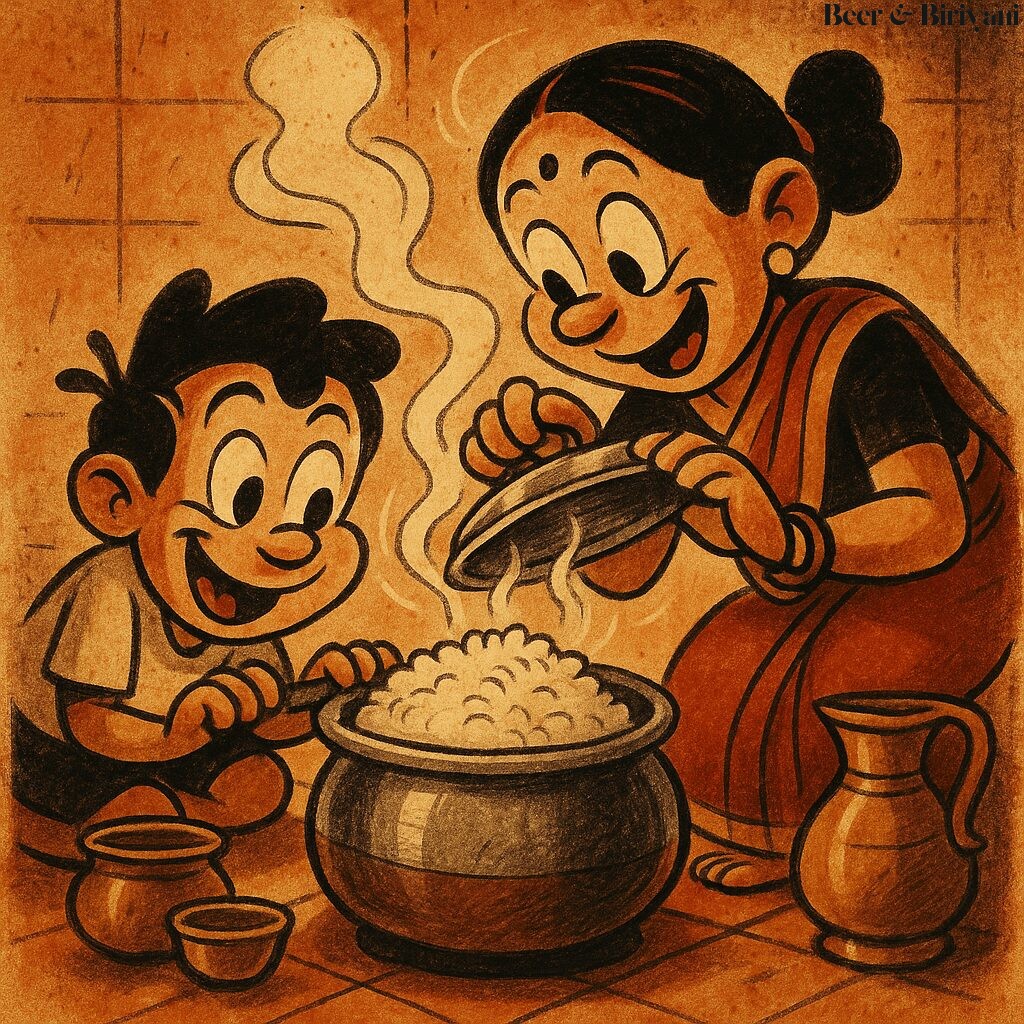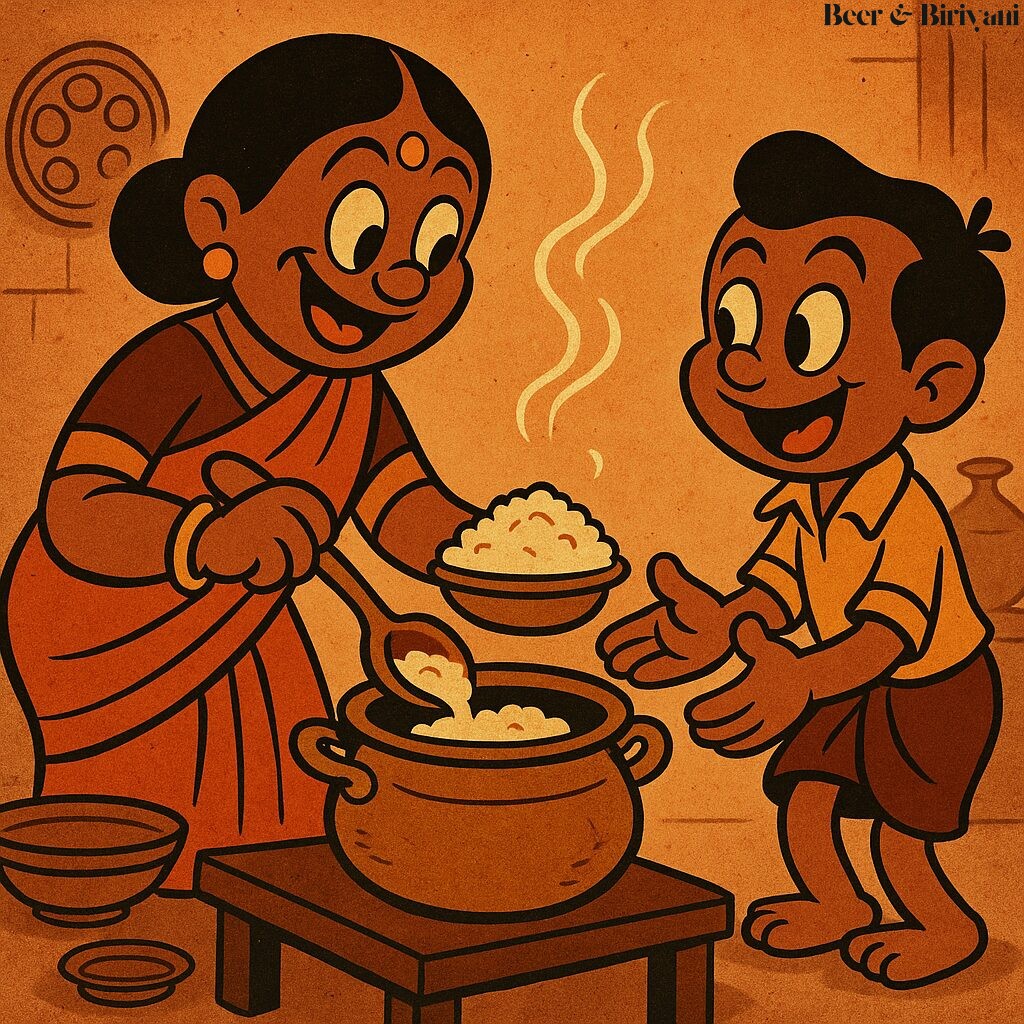There’s rice, and then there’s basmati. The latter doesn’t just sit on a plate. It introduces itself. With its perfume, its length, its fluff. It’s the kind of grain that walks in wearing linen and expects you to notice—not loudly, but with quiet confidence. A plate of basmati isn’t filler. It’s center stage. And it knows it.
Growing up in Mumbai, rice was omnipresent. But basmati was special. Reserved. It showed up at weddings and festivals. At Sunday biryani lunches and rare celebratory dinners. The everyday kolam or sona masuri did the heavy lifting during the week, but basmati? That was for when the house smelled like ghee and cardamom before noon. When something was being cooked that would be talked about for hours, maybe days.
The Rice With Memory
What sets basmati apart is not just its taste, but its behavior. Each grain is long, slender, and assertive. It doesn’t clump. It doesn’t sulk. It stands apart—literally. Good basmati rice fluffs up into elegant, separate grains, each one visible and accounted for. It’s rice that respects your effort.
But the real seduction starts before you even eat it. That aroma. Earthy, floral, nutty—like the memory of rain on dry soil mixed with the whiff of your grandmother’s cupboard. That’s due to a compound called 2-acetyl-1-pyrroline, which scientists say is present in aged basmati in greater quantities than most other rice varieties. But honestly, no science can capture the emotion of that scent wafting through a home. You just know when basmati is on the stove. It feels like something important is happening.
Basmati and the Art of Timing
Basmati demands a certain reverence when cooking. You can’t just toss it in boiling water and forget it. No. You rinse it. Sometimes soak it. Handle it like silk. A little ghee? Sure. A few whole spices? Absolutely. You let it simmer and then rest. No poking. No stirring. You fluff it gently with a fork, like waking someone up from a very good nap.
When done right, basmati doesn’t just taste good. It behaves beautifully. It makes every curry feel fancier. It elevates dal. It turns leftovers into poetry. My mother always said you should be able to eat good basmati plain. Nothing on it. That’s the test.
The Emotional Geometry of the Grain
There’s also a visual pride in basmati. It’s rice that makes a plate look dressed up. The long, tapering grains, stretching out like they had somewhere to be—it’s a visual language that says, “This is not rushed.” When served under a rich shahi paneer or a slow-cooked meat curry, it anchors the dish without ever begging for credit. And yet, its presence is unmistakable.
Rice as Ritual
In many parts of India, especially the north, basmati rice is more than an ingredient. It’s part of ritual. Offered to gods, cooked for guests, carried in wedding feasts, and packed into tiffins for journeys. It’s the rice of beginnings, endings, and everything in between. There’s a reason why recipes for zarda (sweet saffron rice) or pulao always start with basmati. You can’t make these dishes with any other rice and hope for the same magic. It’s like trying to sing a classical raag with a sore throat. Technically possible. Spiritually wrong.
From Punjab to Austin
Now in Austin, my pantry has both jasmine and basmati—because life is complicated. But I still default to the long-grain diva from home. When I cook biryani, I don’t cut corners. I steam the rice separately, layer it with saffron milk, mint, and caramelized onions. I let it rest. I serve it with ceremony. Because with basmati, you don’t rush. You wait. You respect the grain that demands to be treated right.
And every time I lift the lid and that fragrance hits me, I’m 14 again, peeking into my mother’s pressure cooker, asking “Is it done yet?” Knowing fully well the answer would be “Don’t touch. Let it steam.”
That’s basmati for you. A grain that remembers. That teaches you patience. That quietly says: Pay attention—I matter.
Born in Mumbai, now stir-frying feelings in Texas. Writes about food, memory, and the messy magic in between — mostly to stay hungry, sometimes just to stay sane.












